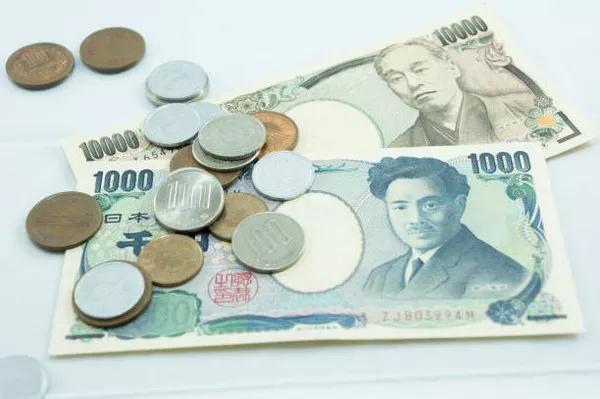In the dynamic landscape of global finance, certain currencies stand out not only for their economic significance but also for their cultural resonance. The Japanese yen, renowned for its stability and resilience, embodies the essence of Japan’s economic prowess and cultural heritage. Within the spectrum of yen denominations, the 100 yen coin occupies a unique position, symbolizing both practical utility and symbolic value. In this comprehensive analysis, we delve into the multifaceted aspects of Japan’s 100 yen coin, uncovering its historical roots, economic implications, and cultural significance.
Exploring the Origins: A Historical Overview
To understand the significance of the 100 yen coin, it is imperative to trace its origins back to Japan’s monetary history. The concept of the yen as a currency dates back to the Meiji Restoration in the late 19th century when Japan embarked on a journey of modernization and economic reform. Initially, the yen was introduced as a unit of currency based on the decimal system, with 100 sen equating to 1 yen.
The 100 yen coin made its debut in 1957, amidst Japan’s post-war economic resurgence. Crafted from cupronickel, the coin bore the image of a sakura (cherry blossom) branch on its obverse side, symbolizing Japan’s natural beauty and cultural heritage. The reverse side featured the iconic phoenix, representing resilience and rebirth—a poignant reflection of Japan’s recovery from the ravages of war.
Economic Implications: The Role of the 100 Yen Coin in Monetary Policy
Beyond its historical significance, the 100 yen coin plays a pivotal role in Japan’s contemporary monetary landscape. As a denomination widely circulated and readily accepted, it serves as a cornerstone of everyday transactions, from purchasing commodities to facilitating transportation fares. In the realm of monetary policy, the 100 yen coin holds intrinsic value as a tangible representation of Japan’s monetary stability.
Moreover, the 100 yen coin’s composition and design reflect meticulous attention to detail, underscoring Japan’s commitment to precision and craftsmanship. Its durability and resistance to wear ensure prolonged circulation, minimizing the need for frequent replacement—a factor of paramount importance in maintaining the efficiency of Japan’s currency supply chain.
Cultural Significance: Symbolism and Iconography
Beyond its utilitarian function, the 100 yen coin embodies a wealth of cultural symbolism deeply ingrained in the Japanese collective consciousness. The sakura motif adorning its surface epitomizes the transient beauty of nature—a theme central to Japanese aesthetics and philosophy. The fleeting bloom of cherry blossoms serves as a poignant reminder of life’s impermanence, inspiring introspection and appreciation for the ephemeral.
Furthermore, the phoenix depicted on the coin’s reverse side holds profound symbolism in Japanese folklore and mythology. As a mythical creature associated with immortality and renewal, the phoenix embodies themes of resilience and regeneration—a narrative resonant with Japan’s historical trajectory of overcoming adversity and embracing transformation.
Practical Utility: Everyday Applications and Consumer Behavior
In the realm of everyday transactions, the 100 yen coin occupies a ubiquitous presence, serving as a preferred denomination for small purchases and transactions. Its convenient size and weight make it ideal for carrying in wallets and purses, facilitating seamless exchanges in a variety of settings—from bustling urban markets to tranquil rural villages.
Consumer behavior surrounding the 100 yen coin reflects a blend of pragmatism and cultural affinity. While its intrinsic value remains constant, the coin’s symbolic resonance often transcends its monetary worth, evoking sentiments of nostalgia and cultural identity. As a tangible embodiment of Japan’s economic stability and cultural heritage, the 100 yen coin holds enduring appeal among both domestic residents and international visitors alike.
Innovation and Evolution: Adapting to Changing Times
In an era characterized by rapid technological advancement and digitalization, the role of physical currency faces new challenges and opportunities. However, far from rendering traditional coins obsolete, the digital revolution has prompted innovative approaches to currency design and circulation.
In response to evolving consumer preferences and technological trends, Japan has embraced initiatives such as the introduction of cashless payment systems and the adoption of digital currencies. Yet, amidst these transformative changes, the 100 yen coin remains a steadfast symbol of Japan’s monetary tradition and cultural identity, reaffirming its enduring relevance in an ever-changing world.
Conclusion:
In conclusion, Japan’s 100 yen coin stands as a testament to the intersection of tradition and modernity, embodying the essence of Japan’s economic resilience and cultural heritage. From its humble origins in post-war reconstruction to its enduring presence in contemporary society, the 100 yen coin serves as a tangible link between Japan’s past, present, and future.
As we navigate the complexities of a globalized world, it is essential to recognize the intrinsic value of cultural artifacts such as the 100 yen coin—a reminder of the rich tapestry of history and tradition that shapes our collective identity. In preserving and honoring these symbols of our shared heritage, we pay homage to the resilience and ingenuity of those who came before us, ensuring that their legacy endures for generations to come.
In essence, the 100 yen coin transcends its monetary value, serving as a tangible embodiment of Japan’s cultural legacy and economic stability. As we continue to chart new frontiers in the realms of finance and technology, let us not forget the enduring significance of these humble coins—a testament to the enduring power of tradition in a rapidly changing world.


